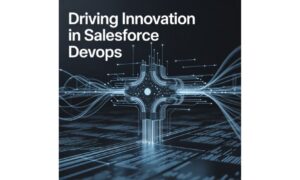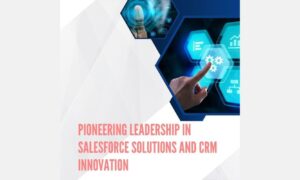In the dynamic world of cloud computing, the role of a Salesforce Administrator has become increasingly critical. As organizations worldwide rely on Salesforce to manage customer relationships, secure and efficient system administration is paramount.
This article, informed by insights from the experts of Salesforce classes in Delhi, delves into who a Salesforce Administrator is, their roles and responsibilities, and the top 10 security best practices they must adhere to.
Who is a Salesforce Administrator?
A Salesforce Administrator is a professional responsible for managing and customizing Salesforce to ensure an organization gets the most out of its Salesforce environment. They are pivotal in configuring and maintaining the platform, ensuring it aligns with the company’s business processes, explained the experts in the Salesforce classes in Delhi. Their duties include:
- User Management:Adding, deleting, and managing user access.
- Data Management:Importing, exporting, and maintaining data accuracy.
- Customization:Creating custom reports, dashboards, workflows, and more.
- Security:Ensuring data security through role hierarchies, permission sets, and sharing rules.
- Support:Providing support and training to users to maximize efficiency and productivity.
Given the sensitive nature of the data managed on Salesforce, security becomes crucial to the Salesforce Administrator’s role. Let’s explore what security best practices are and why they are essential.
Understanding Security Best Practices and Their Importance
Best practices for security are policies and procedures created to safeguard information and guarantee its availability, integrity, and confidentiality. Salesforce Administrators are required to follow them. The company may guard against potential security breaches and unlawful access while protecting sensitive consumer data by following these procedures.
It is impossible to overestimate the significance of these best practices. Strong security measures help avoid data loss, defend against cyberattacks, guarantee regulatory compliance, and foster consumer trust by displaying a dedication to data protection.
10 Security Best Practices for Salesforce Administrators
- Implement Multi-Factor Authentication (MFA)
Using two or more methods for identity verification, multi-factor authentication (MFA) provides an additional layer of protection. This could include their identity (fingerprint), what they possess (security token), or what they know (password). Enforcing MFA significantly lowers the risk of unwanted access, even if login credentials are stolen.
- Regularly Update Password Policies
Strong password policies are fundamental to securing Salesforce data. Salesforce Administrators should enforce policies requiring complex passwords and periodic password changes and prevent reusing old passwords. Regularly reviewing and updating these policies helps mitigate the risk of account breaches.
- Use Role Hierarchies and Profiles Wisely
Role hierarchies and profiles in Salesforce determine what data users can see and what actions they can perform. Administrators should carefully design role hierarchies to reflect the organization’s structure while ensuring users have the minimum necessary access to perform their duties. Profiles should be tailored to provide appropriate permissions based on job functions.
- Leverage Permission Sets and Sharing Rules
Permission sets and sharing rules offer more granular control over data access. While profiles define base-level access, permission sets can be used to grant additional permissions as needed without modifying profiles. Sharing rules can be employed to extend access to records based on criteria such as roles or record ownership, ensuring that data is shared appropriately and securely.
- Monitor Login and Data Access Patterns
Salesforce offers features for tracking login attempts and data access trends. Salesforce Administrators should routinely review past login records, look for odd activity, and set up alerts for questionable conduct. By monitoring these patterns, potential security issues can be swiftly identified and addressed.
- Enable Salesforce Shield
Salesforce Shield is a set of security tools that provide enhanced encryption, monitoring, and auditing capabilities. It includes features like Event Monitoring, Platform Encryption, and Field Audit Trail. Enabling Salesforce Shield can help administrators protect sensitive data, track changes, and comply with regulatory requirements.
- Conduct Regular Security Audits
Regular security audits are essential to identify vulnerabilities and ensure compliance with security policies. These audits should include reviewing user access, checking for inactive users, assessing the effectiveness of security controls, and ensuring that data-sharing rules are still aligned with organizational needs.
- Educate Users on Security Best Practices
User education is a critical component of maintaining security. Administrators should arrange regular training sessions to educate users about phishing attacks, safe internet practices, and protecting login credentials. A well-informed user base is the first line of defense against security breaches.
- Limit API Access and Monitor API Usage
API access can be a gateway for cyber threats if not properly managed. Salesforce Administrators should restrict API access to trusted applications and monitor API usage to detect any unusual activity. Setting up API usage alerts can help identify and mitigate potential security issues early.
- Backup and Recovery Planning
A robust backup and recovery plan guarantees that data can be restored in case of a breach, system failure, or data corruption. Administrators should implement regular data backups and ensure that recovery procedures are tested periodically. This practice ensures business continuity and data integrity.
The role of a Salesforce Administrator is multifaceted and vital for the seamless operation of an organization’s CRM system. Security best practices form the cornerstone of a Salesforce Administrator’s responsibilities, ensuring that sensitive data remains protected and the system operates efficiently.
By following the ten security best practices listed above, Salesforce Administrators can significantly improve the security posture of their Salesforce environment, protecting it from potential threats and guaranteeing regulatory compliance.
The takeaways from the experts providing Salesforce training in Delhi highlight how crucial it is for administrators to keep up with the most recent security developments and Salesforce functionalities. Security is no longer a one-time task but a continuous, proactive endeavor since threats and countermeasures change over time.
Salesforce administrators can contribute to their organizations’ overall resilience and success by fostering a security awareness and diligence culture.



































